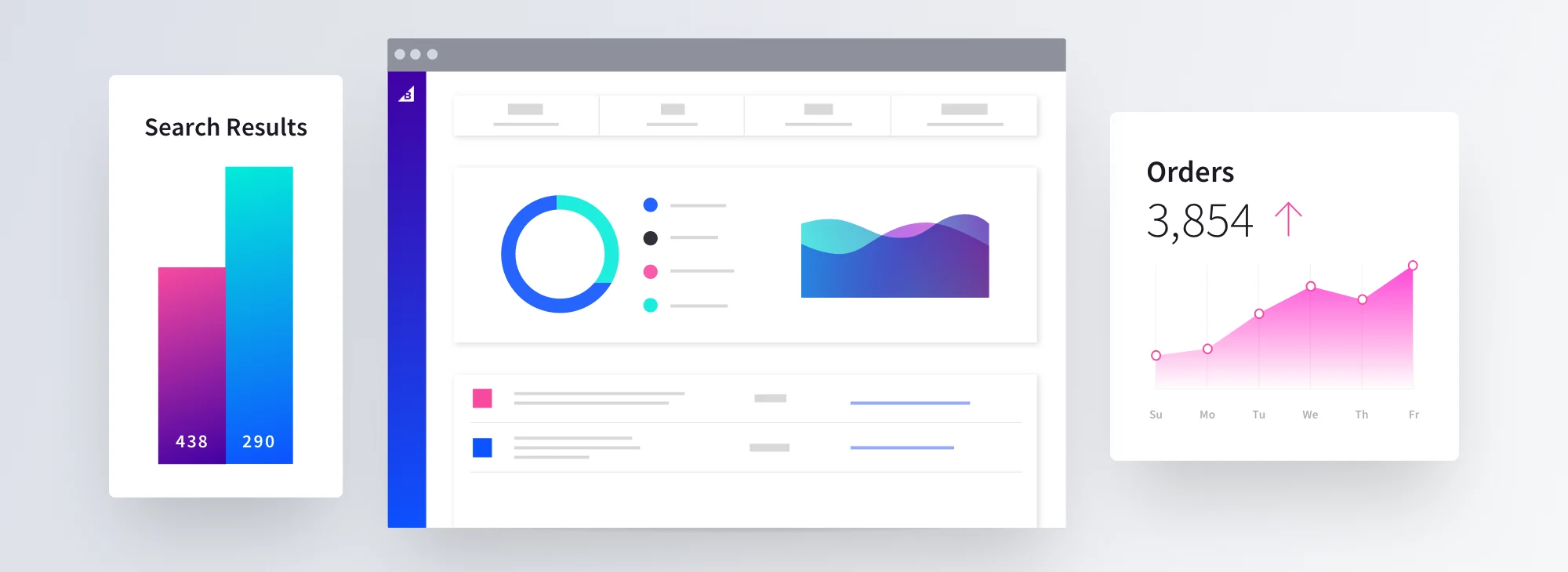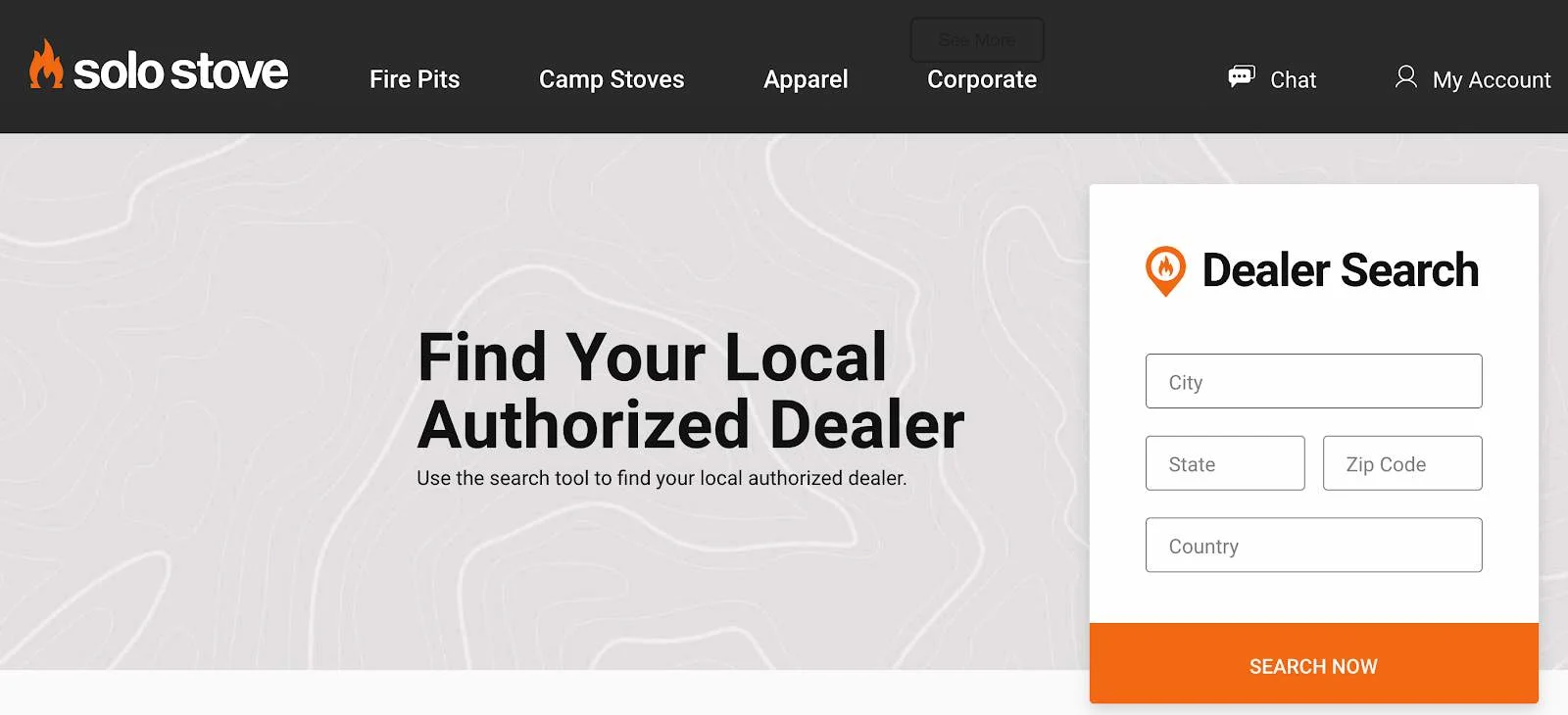Customer Analytics: Where the Answers to All of Your Ecommerce Marketing Questions Live
Alex McPeak


Customer Analytics: Where the Answers to All of Your Ecommerce Marketing Questions Live
Get The Print Version
Tired of scrolling? Download a PDF version for easier offline reading and sharing with coworkers.
A link to download the PDF will arrive in your inbox shortly.
There’s a lot that goes into becoming a great ecommerce marketer. You might be phenomenal at writing website copy, email marketing, social media strategy, and paid advertising.
But even if you possess all the most sought-after skills, how do you decide where to spend your time? The answer lies in your customer analytics.
To better understand the customer analytics you should be tracking, you have to dig into the different data points and what they mean. Then, determine what questions you want to answer about your ecommerce performance and how you’ll integrate this analysis into your ecommerce strategy.
Once you’re tracking the right data, you can start using the resulting customer insights to inform business decisions and improve acquisition, retention, and customer loyalty.
What Are Customer Analytics?
Customer analytics refers to a collection of data points that indicate what customers are interacting with, how, and for how long. Interpreting those data can help you understand what’s resonating among your different customer segments.
All of your marketing initiatives will have some form of customer analytics attached to them. Think about your website and these examples of relevant customer analytics:
Number of daily pageviews.
Number of users who click on a featured homepage offer.
Percentage of users who bounce compared to how many stay to visit another page.
Average amount of time spent on a webpage.
All of these metrics, in context, can help you better understand the performance of your site.
These metrics are changing all the time, and some of the factors may be out of your control. If you have a lower-than-average number of pageviews on a Saturday, it could be because you just changed your Google Ads keywords — or maybe the majority of your audience prefers to shop during the week.
The only way to understand your analytics is by digging in. Once you take a closer look at the data, you can start making more informed business decisions about what’s working and what changes you should make going forward.
The Ins and Outs of Customer Analytics
Understanding and analyzing customer behavior through analytics requires looking at the different areas of your business, asking questions, and diving into the metrics.
Your tool of choice for most of these foundational numbers will be Google Analytics, which is free to use. But, many tools that you use to create your ecommerce experience will also come with their own analytics to give you a more granular understanding of certain areas of your business. Additionally, Google Analytics is limited to your website and doesn’t always give a full picture of the performance of broader marketing activities, such as email marketing performance.
The breadth and depth of analytics you can collect depends on how many tools and integrations you depend on and the amount of data they provide. That said, there are plenty of questions that customer analytics can answer that will be crucial to the evolution of your marketing.
How Ecommerce Customer Analytics Can Improve Your Strategy
Guesswork is rarely an effective marketing strategy. But collecting, analyzing, and making decisions based on the actual data attributed to your customers will always work in your favor.
1. Capture, store, and organize customer data.
There are many ways to collect data and many tools that offer some form of customer analytics. But in order to fully understand and act on that data collection, you need one single place for data management.
This will allow you to view all of the analytics coming through from the various systems, tools, and integrations that make up your ecommerce experience.
When all of your marketing activities are guided by a single data repository, you can better ensure an effective omnichannel experience for every customer and facilitate activation of high-priority marketing strategies.
2. Analyze and make decisions with that data.
Data can do a lot of the heavy lifting, but it’s up to you to derive the insights that will change the course of your marketing scope.
Once you have all your customer analytics in one place, it’s time to implement and act. Use these data points to identify what’s working and what’s not in your marketing strategy in order to identify buying habits and make iterative changes to your customer experience.
Although you may be tempted to go forth and conquer with a site overhaul, it’s often these small changes that are the most effective. As you layer them and evolve over time, you can watch your strategy improve day to day as well. And in case something backfires, it’ll be easier to track it back to which change should be reversed.
A lot of your customer analytics will point you in a clear direction for your next move. But if you aren’t sure exactly what a certain data point means, use A/B testing to test out your hypothesis on different customer subsets before committing to a change.
Important Metrics to Track Using Customer Analytics
Customer analytics will be crucial to just about every marketing effort you pursue — whether it informs the strategy or demonstrates results. But most marketers are invested in the success of a few foundational elements above all:
1. Mobile adoption.
Customer analytics can help you understand the rate of mobile adoption, or how many people use your mobile app or the mobile version of your site. It’s incredibly important to look beyond your website if you’re aiming to create an optimal omnichannel experience.
Analytics are going to look different from device to device because your audience will interact differently with your content on each device. By segmenting analytics to look specifically at mobile devices and mobile adoption numbers, you can better understand what improvements should be made across specific devices.
2. Customer retention.
Repeat customers are one of the most valuable resources you have—in fact, they’re responsible for 40% of a brand’s revenue. This is why focusing on customer retention is one of the best ways to reduce customer acquisition costs (CAC). This also means that your businesses’ repeat purchase rate (RPR) is one of the most important metrics you can track.
Repeat purchase rate tells you how many customers return to make a second purchase. If this number is too low, then you probably want to start putting more effort into your customer retention strategy.
This may include creating more educational content to teach customers about the benefits of your product, or it could mean creating a rewards program to influence your customer’s next purchase. No matter what method you use, customer retention should always be a top priority.
3. User engagement.
Just because shoppers are visiting your website and seeing your content doesn’t mean they’re engaging with it. The difference between whether your website provides value or just skims the surface lies in customer analytics such as bounce rates and time on page.
If you’re seeing that these numbers are low, think about how you can add value to different touchpoints along your customer journey. For example, if you’re finding that site visitors are barely spending a few seconds on your homepage, you could try implementing a video on your homepage that tells your brand story.
Direct-to-consumer furniture brand Burrow implemented this strategy throughout their homepage by using video to show customers key attributes of their customer experience, like just how easy it is to put one of their sofas together.

To get even more information on what’s resonating with customers, use a heat map to see where people are clicking on each page. This can give you more precise details about which areas they’re engaging with and which could use optimization.
4. In-app purchases.
Conversions are likely the most important bottom-line measurements, which means if you’re looking at mobile adoption and other mobile analytics, you should also be looking at in-app purchases
Similar to mobile adoption, you can segment your customer analytics by the device. To get a better understanding of in-app purchases specifically, you will want to look at goals and conversion rates. Once you have these numbers, compare them to what you’re seeing with desktops usage.
If you’re seeing a relatively low number of in-app purchases compared to mobile adoption and user numbers, then you probably want to start thinking about how you can optimize your mobile experience, whether that’s by creating a more seamless checkout or rethinking your site design to better accommodate the mobile user experience.
Questions Customer Analytics Can Help You Answer
Every good marketer is creative and curious. Creativity is crucial to ideate new strategies and growth tactics, while curiosity encourages you to explore whether those ideas were successful or a flop, or somewhere in between.
Marketers have a plethora of channels to choose from when it comes to deciding where to focus their time, attention, and budgets. But the most effective channels will change from business to business and brand to brand. What works for you will not necessarily work for someone else, and vice versa.
Data analytics can answer questions on anything that can be measured or tracked, which means diving into these numbers will also tell you which marketing channels are most effective.
That said, the answers are only as good as the creativity questions asked of them and the curiosity of the marketer.
1. Which channels drive the most new customers?
Customer acquisition is always on marketers’ minds because brands are always interested in the best ways to win new customers. Because of this, demand generation efforts focus on the very question of which channels will drive the new customers. The use of customer analytics in this scenario is to tell you precisely where new traffic is coming from.
Again, this will vary from business to business and what works for you might not necessarily work for someone else, which is why it’s so important to look closely at the data before spending your time and money on pricey customer acquisition methods if you don’t have data that tells you how they’ll pay off
Are new customers coming through referrals or arriving organically? Can you narrow this down to different channels like social media, the blog, or a podcast sponsorship? Perhaps they’re coming from affiliates or influencers. Knowing which channels are most likely to draw in new audiences means knowing where to spend your money on demand generation and growth without suffering from sky-high CAC.
2. What is the most common customer journey from awareness to advocacy?
A customer journey details the steps a user takes from their first touchpoint with your brand to their final destination—making a purchase.
In addition to understanding which channels customers are most likely to find you through, customer analytics can also give you a better understanding of which touchpoints lead to conversion and, eventually, advocacy.
An attribution model can tell you what web pages, resources, and other content resonates most with customers by examining how often it serves as a touchpoint in your customers’ buyer journey. Once you know what these touchpoints are, you can make a more concentrated effort on them as you build out your marketing strategy.
For example, perhaps half of your customers view one of your five webinars before converting. With this information, it’d be smart for your team to start making webinars on a more regular basis since it’s clearly providing value to your customers and creating brand advocacy.
3. What are our most profitable revenue channels?
At the end of the day, your goal as a marketer is to contribute to bottom-line revenue goals, which begs the question of which channels are actually the highest contributors to making the sales and influencing high average order value (AOV)
The good news is you can also segment different channels, pages, and touchpoints based on their bottom-line value. After you set goals in Google Analytics, page value will attribute each page on your site to an average number of sales by looking at transactional revenue plus total goal value divided by unique pageviews.
Once you understand the perceived value of these channels, you can prioritize them in your marketing efforts as you know they’ll be the most lucrative.
4. Which users are the most profitable?
While your marketing strategy deserves a lot of credit for bringing in the dollars, some customers are more prone to make purchases than others. You’ll likely find few who are natural fans of your brand and will keep coming back for more purely on their own account. Some will even become advocates of your brand and influence referrals.
Look at customer lifetime value to better understand who these customers are and what patterns or behaviors are consistent among them. Then, use this information to inform your future marketing. For example, if you’ve found that over half of your customers with the highest customer lifetime value are males under 30 living in Boston, you could start targeting that demographic more aggressively in your marketing and messaging.
Additionally, once you identify who the most profitable users are, you can create additional strategies — like customer loyalty programs — to influence increased AOV, more regular purchases, referrals among their family and friends, reviews of the products they purchase, and feedback of your brand or customer experience through surveys.
5. Where do we lose customers and why?
In the same way you can look into all the things that are most successful on your website and throughout your buyer’s journey, customer analytics also help you identify areas that could use some TLC.
Look at pages that have high exit and bounce rates or low conversion rates to see where you have room for improvement. These analytics provide clues to tell you where customers are spending their least amount of time or are, for some reason, dissuaded from continuing the buyer journey. These areas generally have low customer satisfaction and so have a lot of room for improvement.
For example, perhaps your product pages are seeing bounce rates that are higher than ideal. You could tweak the copy on the product details, increase the number of images you include, or add customer reviews and social proof. Once you have identified which touchpoints need revamping, you can audit them on an individual basis.
This is also a great opportunity to implement some A/B testing to collect more data on which changes perform best with browsers so you can better understand what resonates before making any permanent changes.
6. What behaviors are correlated with high retention rates?
As discussed, your repeat customers are one of your most valuable assets, which means that analyzing the behaviors of repeat and loyal customers is a great way to set yourself up for success in your marketing.
By segmenting your customer base to view your multi-purchase and most loyal users then analyzing what content or pages they interact with the most, you can better understand how to improve retention rates down the line.
This behavioral data can tell you something as small as the fact that more personalized email automations will win the hearts of customers who are looking for VIP treatment, or it could inform a larger marketing strategy, such as considering a subscription model for your products.
7. What features resonate with which customers?
Again, you likely have integrated different tools with your ecommerce store in order to create a premium customer experience. Some of these may include a referral program, a customer support platform, pop-up forms, a review system, or different transactional methods, but there are thousands of ecommerce tools available
While these likely all have their own customer analytics attributed to them, it’s important to regularly track their performance. Perhaps a chatbot and customer service are essential touchpoints as shoppers regularly have questions about sizing. Or maybe you’re finding that flexible payment methods reduce friction and increase conversions. On the other hand, maybe you’re finding that engagement is low with these features and they’re having a negative impact on your customer analytics.
Solo Stove uses a Dealer Search feature on their homepage that allows shoppers to find the closest retail location to them. It’s likely that they may have implemented this feature because they saw that customers were frequently visiting the dealer locator page that sits at the bottom of the website and they wanted to optimize it to make finding a location more convenient.
But if they ever found that this feature wasn’t converting like it used to, they could experiment with changing the call to action (CTA) or reducing the form fields and just asking for a zip code.

It’s important to keep tabs on different features and check them regularly to better understand which are helping and which are hurting, and then adjust or eliminate the ones that aren’t living up to their promises.
There are many nooks and crannies that make up your ecommerce experience, but diving into the details will propel your business forward.
8. What does an optimal user experience look like?
By combining the insights from all of your data analytics questions, you can better answer perhaps the most important question of all: How do I make the customer experience better.
And what’s the best way to know what people are thinking? Ask them. Send out customer surveys and request feedback when users make a purchase, or better yet, when they don’t purchase so you can better curate an experience that meets the customers needs. Asking your customers what they’re looking for gives direct, qualitative insights on what’s working and what’s not.
Additionally, consider implementing pop-ups on your website that ask shoppers more about themselves and the experience they’re looking for with your brand. Asking some basic questions, even if it’s just a birthdate or a gender, gives you more data that you can use in your marketing efforts down the line.
Use Customer Analytics to Optimize Your Online Business
Once you begin to understand some of the answers to some of these questions, you can combine real-time data and customer insights to optimize your online store. With a deeper understanding of your shoppers, you can develop strategies to personalize, target, and respond to their needs and behaviors.
1. Customer segmentation and targeting.
Once you have more information on the behaviors of different customers, you can use this to segment different audiences on your online store and in other marketing activities to further target them.
This kind of customer segmentation will be very powerful when it comes to targeting future campaigns and events to certain groups of people based on shopping history and preferences.
For example, once you can compare the behaviors of non-purchasers compared to current customers, you can use this information to inform your pop-up forms. Skincare company, Bliss, uses their pop-up exit intent to offer 15% off customers’ first online order. This incentive is perfect for first-time buyers.
For returning customers, you might want to consider encouraging signing up for their newsletter or completing a feedback survey instead since they’d no longer be eligible for the first-time discount.
Additionally, once you collect customer data and attributes, you can use predictive analytics to even further personalize the experience for customers. Leveraging this kind of big data is extremely useful when it comes to product-based content and purchase recommendations.
By using market segmentation and targeting, you can assure the right audiences are seeing the messages that you want to communicate.

2. Localization.
Shopping habits and behaviors can vary from location to location, which means you can use customer analytics to target shoppers by location and make the experience hyper-relevant.
For example, many stores use different themes based on whether users are based in the US, Europe, or another country. This is usually done based on customer analytics—brands recognize that customers in different locations respond to different experiences, so they implement them on a country by country basis.
While this is often noticeable on a site-wide basis, it can also trickle down to smaller details the impact the customer experience as well, such as currency or date format. While these may seem insignificant to you, it can make all the difference to a shopper.
3. Product attributes.
Once you understand what qualities your customers care about the most, you can use that in product development and design as well as in your product detail pages.
You can get a better understanding of which product attributes to focus on by looking at best-selling or highest-rated products and noting the similarities. Additionally, you may try asking customers directly by sending a post-purchase email including a survey or questionnaire to get feedback on what the top drivers of a purchase are.
4. Ad retargeting.
Advertising is a great discovery tool for brands, but if you’re putting money into channels without using customer analytics to refine your targeting, then you’re likely casting too wide of a net.
Using customer data for ad retargeting allows you to market to a more narrow audience based on behavior you’ve already analyzed. The customer analytics you’ve gathered can help you build out a complete paid advertising campaign that is also more likely to give you high return on ad spend (ROAS) than if you were to just market to a broad audience.
For example, you may have found that your customers are most often women over 45. You can use this to target those audiences through various advertising channels because you already know your products are more likely to resonate with that group.
Additionally, this data can allow you to find audiences that share similarities to your current customers through lookalike audiences. By taking the properties of your current audience, finding others that share those behaviors and preferences, and targeting your advertising toward them, you’re more likely to offer products that they’ll find relevant.
Conclusion
Customer analytics are perhaps the most important asset a market can own. But they’re worthless if you aren’t regularly tracking them, analyzing them, using them to influence your decision making, implementing changes based on your findings, and creating a system for data management.
Start asking the right questions surrounding your onsite data and various user behaviors and your customer analytics will provide you all the answers you could ask for—and many more.



